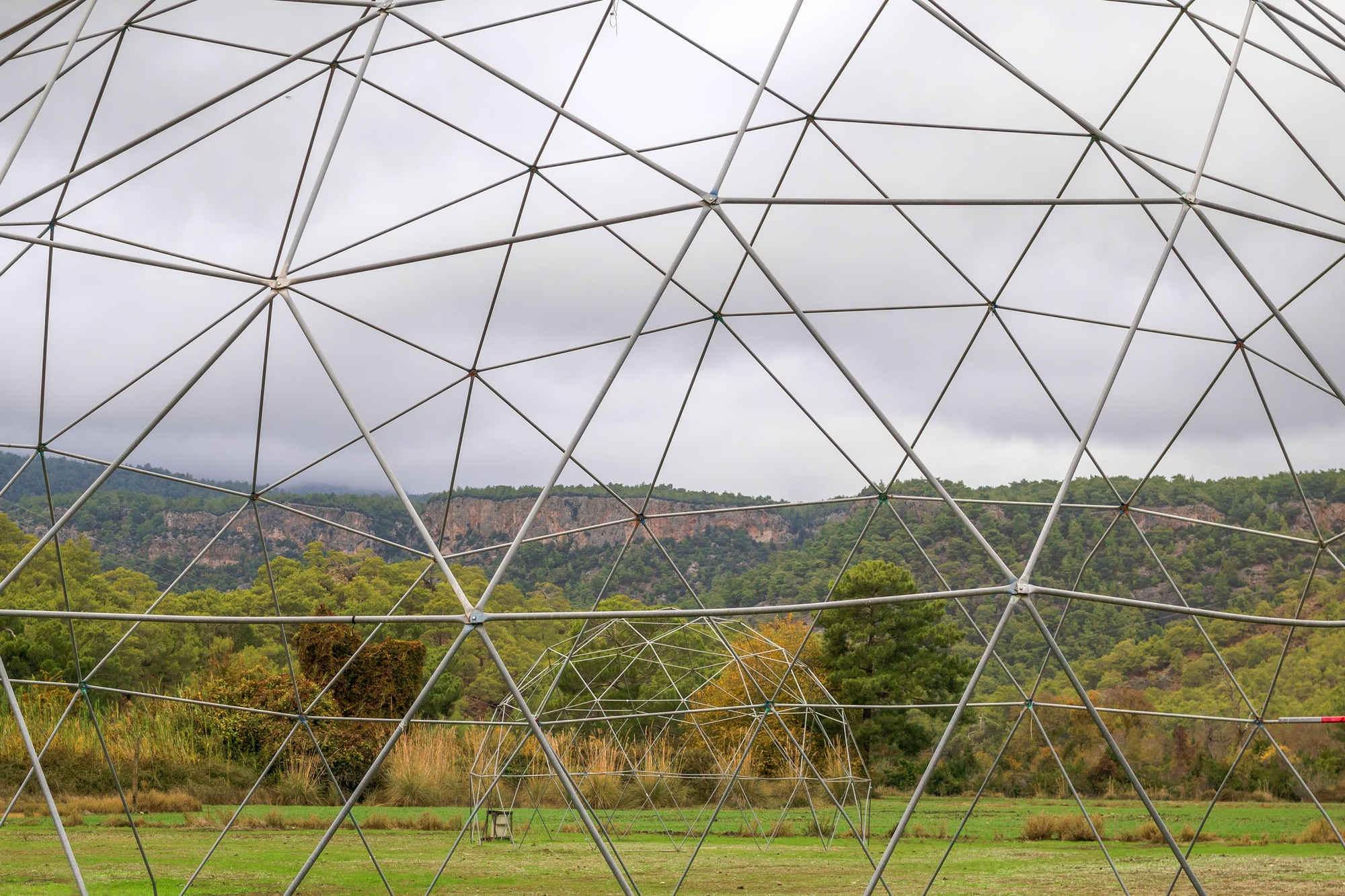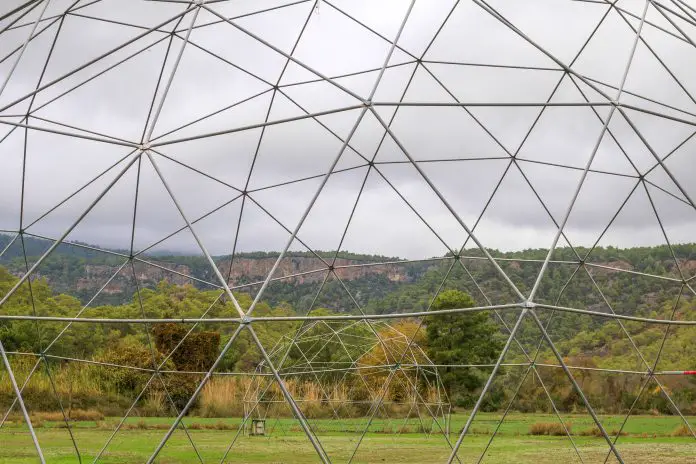Key Takeaways

- Understanding Glamping: Glamping blends luxury and nature, offering upscale accommodations like tents, yurts, and cabins, which attract diverse travelers seeking unique experiences.
- Growing Market Potential: The glamping industry is rapidly expanding, with projected growth from $2.35 billion in 2021 to $3.72 billion by 2028, presenting ample business opportunities.
- Importance of Market Research: Conduct thorough market research to identify target audiences, analyze competitors, and understand current trends to effectively tailor your glamping offerings.
- Strategic Location Selection: Choose a captivating location that enhances guest experience and accessibility, focusing on natural beauty and proximity to local amenities.
- Effective Marketing Strategies: Build a strong online presence, leverage social media, and create engaging content to attract customers and promote your glamping business effectively.
- Financial Planning Essentials: Carefully analyze startup costs and implement effective pricing strategies to ensure profitability and sustainability in the competitive glamping market.
Imagine trading your nine-to-five grind for a life filled with nature, adventure, and creativity. Starting a glamping business offers you the chance to combine your love for the outdoors with the comforts of luxury. As more people seek unique travel experiences, glamping has become a booming industry, attracting those who want to escape the hustle and bustle without sacrificing comfort.
If you’re ready to embark on this exciting journey, you’ll need a solid plan to turn your vision into reality. From selecting the perfect location to designing unforgettable accommodations, every step is crucial. Dive into the world of glamping and discover how you can create a memorable experience that keeps guests coming back for more. Your dream of running a successful glamping business is just around the corner.
Understanding Glamping

Glamping combines the thrill of camping with the comfort of luxury accommodations. It caters to travelers seeking unique experiences without sacrificing comfort.
What Is Glamping?
Glamping, or glamorous camping, involves staying in upscale tents, yurts, treehouses, or cabins that provide modern amenities. These accommodations often include comfortable beds, private bathrooms, and electricity, allowing guests to enjoy nature without roughing it. Popular in various settings, including national parks and rural areas, glamping attracts diverse clientele, from families to couples looking for romantic getaways.
Benefits of Glamping
- Growing Market: The glamping market expands annually, with reports showing a projected market growth from $2.35 billion in 2021 to $3.72 billion by 2028.
- Attracts Diverse Customers: Glamping appeals to those wanting outdoor experiences without compromising luxury. This broad appeal increases potential customer bases.
- Lower Startup Costs: Setting up a glamping business typically requires less investment compared to traditional hospitality ventures. You can start with fewer accommodations, focusing on quality and unique designs.
- Increased Booking Flexibility: Guest preferences allow for a variety of booking options, from short getaways to extended stays. This flexibility enables you to cater to different customer schedules and increase occupancy rates.
- Sustainable Practices: Many glamping businesses emphasize eco-friendliness, appealing to environmentally-conscious travelers. By incorporating sustainable materials and practices, you can differentiate your startup in a competitive market.
Market Research

Conducting market research is essential for your glamping business’s success. Understanding current trends, your target audience, and competitive dynamics informs strategic decisions that align with industry demands.
Identifying Your Target Audience
Identify your target audience by assessing demographics, preferences, and travel trends. Glamping attracts various groups, including families, couples, and solo travelers seeking unique experiences. Focus on eco-conscious individuals who prioritize sustainable travel options. Utilize surveys or social media insights to gather data about potential customers’ interests and motivations. Such insights help tailor your offerings and marketing strategies effectively, ensuring you address specific customer needs.
Analyzing Competition
Analyze your competition to identify strengths and weaknesses within the glamping market. Research existing glamping sites, noting their amenities, pricing models, and customer reviews. Pay attention to what attracts visitors and where competitors fall short. This information allows you to differentiate your business and develop a unique value proposition. Additionally, evaluate market share within different regions, focusing on successfully operating businesses and understanding why they thrive. By comprehensively analyzing competition, you can position your startup effectively to gain a competitive edge.
Setting Up Your Glamping Business
Setting up your glamping business requires strategic planning and execution, focusing on the right location and necessary paperwork.
Choosing a Location
Choose a location that captivates your target audience. Consider natural features and scenic beauty, such as lakes, forests, or unique landscapes. Locations near areas of outstanding natural beauty (AONB) and national parks attract more guests. Assess accessibility for guest vehicles and supply delivery; proximity to major highways or airports enhances convenience. Evaluate local amenities, including pubs, villages, and hiking trails, as proximity within two hours’ drive from large towns boosts footfall.
Securing Permits and Licenses
Securing permits and licenses is crucial for operating legally. Research local regulations concerning glamping, zoning, health, and safety requirements. Contact local authorities to understand specific permits required for your business. Obtain necessary licenses to ensure you meet all legal standards. A proactive approach to compliance minimizes potential setbacks and keeps your glamping venture on the right track.
Designing Your Glamping Experience
Designing a unique glamping experience involves several critical elements, from choosing accommodations to providing essential amenities and services.
Types of Accommodations
Select accommodations that cater to your target audience and enhance their experience. Popular options include:
- Tents: Opt for luxury canvas tents with comfortable furnishings, ideal for couples and families.
- Yurts: Choose yurt setups for an eco-friendly and spacious alternative that attracts adventure seekers.
- Treehouses: Incorporate treehouses for a whimsical twist, appealing to nature lovers.
- Cabins: Create modern cabins to provide guests with a cozy retreat, especially during colder months.
Each accommodation type can offer varying levels of luxury and can incorporate unique themes to distinguish your small business in the competitive landscape.
Amenities and Services
Elevate your glamping experience by offering a range of amenities and services. Consider the following:
- Comfortable Bedding: Provide high-quality mattresses and linens for a restful night’s sleep.
- Private Bathrooms: Include en-suite or nearby bathroom facilities to enhance convenience for guests.
- Outdoor Activities: Organize guided adventures or local excursions tied to the natural surroundings.
- Dining Options: Offer onsite dining or cooking facilities, focusing on local produce to attract food enthusiasts.
By implementing well-thought-out amenities and services, your startup can create a memorable experience that keeps guests returning and enhances your reputation in the glamping market.
Marketing Your Glamping Business
Effective marketing is crucial for your glamping business to stand out. Focus on building an online presence and utilizing social media strategies to attract customers.
Building an Online Presence
Develop a user-friendly website that showcases your glamping offerings. Include high-quality photos of accommodations and amenities, which can entice potential customers. Ensure easy booking options to simplify the reservation process. Incorporate informative content about local attractions and activities available to guests. List your business on popular booking platforms like Airbnb, Glamping Hub, and Hipcamp to increase visibility. Consider creating a blog to share updates, tips for glamping experiences, and highlight customer testimonials. This can enhance your search engine optimization (SEO) and draw organic traffic.
Social Media Strategies
Leverage social media platforms, such as Instagram and Facebook, to engage with your audience. Regularly post visually appealing images and videos that highlight unique features of your glamping site. Utilize the storytelling approach to connect with potential guests emotionally. Partner with travel bloggers and glamping influencers to extend your reach and provide authentic endorsements. Run targeted ads to attract specific demographics, especially millennials and Gen X travelers who are more likely to seek unique experiences. Encourage satisfied guests to share their experiences online, creating user-generated content that boosts your credibility and engages others looking for an extraordinary getaway.
Financial Considerations
Starting a glamping business involves careful financial planning. Addressing key financial aspects will support your venture’s sustainability.
Start-Up Costs
Understanding startup costs is vital for a successful launch. Initial expenses can vary widely depending on your chosen location, accommodations, and amenities. Typical costs may include:
- Land Acquisition: Depending on the size and location, purchasing or leasing land can range from $1,000 to $10,000 per acre or more[1].
- Accommodations: Luxury tents, yurts, treehouses, or cabins often cost between $3,000 and $100,000 each, depending on the level of customization and amenities[1].
- Permits and Licenses: Fees for necessary permits and licenses require preparation of about $500 to $2,500, based on local regulations[1].
- Utilities and Infrastructure: Budgeting for water, sewage, and electricity can cost $5,000 to $20,000 or more, depending on accessibility and existing infrastructure[1].
- Marketing and Branding: Initial marketing efforts may require $1,000 to $5,000, depending on your strategy and platforms used[1].
Pricing Strategies
Implementing effective pricing strategies is key to your glamping business’s profitability. Consider the following approaches:
- Cost-Plus Pricing: Calculate total costs involved and add a markup of 20% to 50% to determine the final price[1]. This ensures coverage of operational costs while generating revenue.
- Value-Based Pricing: Assess competitor pricing and customer preferences, aligning your rates with the perceived value of your unique offerings[1]. Factors include comfort level, exclusivity, location, and additional services.
- Dynamic Pricing: Adapt your rates based on seasonal demand and market conditions. For example, increase rates during peak tourist seasons and offer discounts during off-peak times to maintain occupancy[1].
- Package Deals: Create attractive packages that combine accommodations with activities, meals, or special experiences. Package pricing can appeal to families, couples, and groups, enhancing the perceived value of the stay[1].
By effectively managing startup costs and pricing strategies, you can set your glamping business up for success in the competitive hospitality market.
Conclusion
Starting a glamping business is an exciting opportunity that blends nature with luxury. By focusing on strategic planning and understanding your target audience, you can create a unique experience that stands out in a growing market.
Pay attention to location and design to ensure your accommodations appeal to diverse travelers. With the right marketing strategies and a commitment to quality, you can attract guests seeking memorable getaways.
Embrace the journey ahead and let your passion for glamping guide you towards success. With careful execution and creativity, your glamping venture can thrive in this booming industry.
Frequently Asked Questions
What is glamping?
Glamping, or glamorous camping, combines the elements of camping with upscale accommodations. It offers travelers a unique experience in nature while providing modern amenities like comfortable beds and private bathrooms, making it an attractive option for those seeking adventure without sacrificing comfort.
Why is starting a glamping business appealing?
Starting a glamping business is appealing due to the growing interest in unique travel experiences. It merges a love for nature with luxury accommodations, caters to various demographics, and often requires lower startup costs compared to traditional hospitality ventures.
What are key steps to starting a glamping business?
Key steps include conducting thorough market research, choosing a captivating location, designing unique accommodations, securing necessary permits and licenses, and developing a solid marketing strategy. Each step is crucial for creating a successful glamping venture.
How can I choose the right location for glamping?
Selecting the right location involves finding an area with natural beauty and accessibility, such as near lakes, forests, or national parks. Consider factors like scenery, local attractions, and potential customer traffic to enhance your glamping business’s appeal.
What types of accommodations are popular in glamping?
Popular glamping accommodations include luxury tents, yurts, treehouses, and modern cabins. Each type offers different levels of luxury and unique themes, allowing you to cater to various guest preferences and create memorable experiences.
How important is market research for a glamping business?
Market research is vital for identifying target audiences, understanding trends, and analyzing competition. Knowledge of these factors helps in making informed decisions, differentiating your business, and developing a unique value proposition that attracts guests.
What are some effective marketing strategies for glamping?
Effective marketing strategies include building a user-friendly website, utilizing social media to connect emotionally with potential guests, and listing your business on popular booking platforms. Creating engaging content and encouraging user-generated posts can also enhance visibility.
What key financial considerations should I keep in mind?
Key financial considerations include estimating startup costs such as land acquisition, accommodations, permits, and marketing. Additionally, you should explore various pricing strategies to ensure your glamping business remains competitive and profitable in the hospitality market.
Image Via Envato: nadezhdaz, Angelov1, prathanchorruangsak



